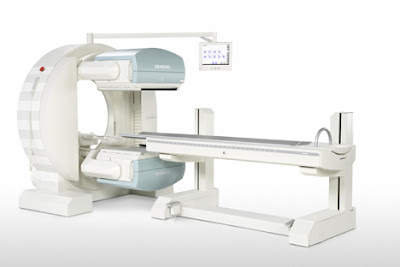 Have you ever wondered how doctors are able to see inside a living human body? Doctors don’t use x-ray vision like Superman, though that would be pretty interesting. Instead, doctors use a machine called a nuclear camera, or gamma camera.
Have you ever wondered how doctors are able to see inside a living human body? Doctors don’t use x-ray vision like Superman, though that would be pretty interesting. Instead, doctors use a machine called a nuclear camera, or gamma camera. History of the Gamma Camera
The first gamma camera, originally called the Anger camera, was developed by Hal Anger in 1957. The first gamma cameras did not rely on the continuous motion of radioactive isotopes as the present day gamma cameras do. Gamma cameras were also not as commonly used as they are today. Most Nuclear Medicine Departments have a gamma camera available. Technological developments have greatly improved the gamma camera over time. Gamma cameras now allow for three-dimensional imagery, something that Hal Anger could only dream of.
What is the purpose of a Gamma Camera?
Gamma cameras can be used to detect, track, and monitor many things. Blood clots can be found by monitoring radioactive isotopes in the blood vessels. Peripheral artery diseases can be detected by injecting isotopes into the arteries. Doctors can find traces of cancer or holes in organs by using a gamma camera. A gamma camera can save lives by helping doctors see inside the body and find what the problem is.
How does a Gamma Camera work?
There is more to a gamma camera than a patient to lay on the table and a doctor to push a button. Radioactive isotopes must be entered into the body in order for the gamma camera to take any images. The isotopes are medically injected, inhaled, or ingested. The radioactivity emitted by the isotopes is detected by the nuclear camera in the form of gamma rays. The gamma rays travel through low-density objects in the body. Dense objects such as lead block the gamma rays, making it possible to see inside the human body. The images are captured by the gamma camera and can then be analyzed on a computer screen and printed off for further examination and study.
While most cameras capture memories of family and friends, a gamma camera captures images that can save the lives of our family and friends.
No comments:
Post a Comment